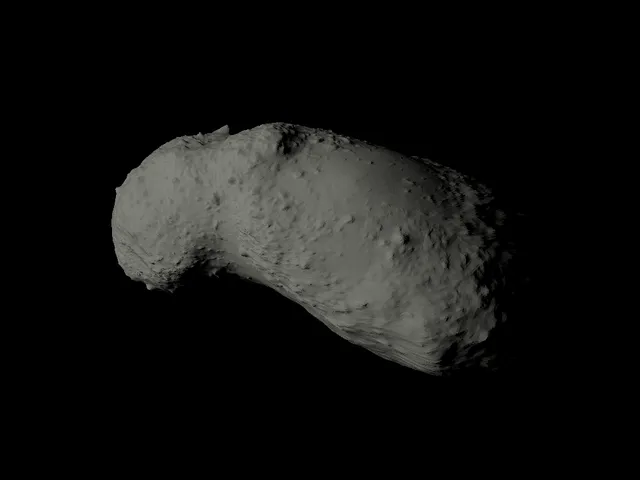
25143 Itokawa scaled one in eight thousand
prusaprinters
Originally published here: 25143 Itokawa scaled one in eight thousand by tato_713 - ThingiverseThis model was plotted using MATLAB R2016a on the ICQ model of the PSI made by Robert Gaskell from the data of the Hayabusa mission.The file's names explained: name_1_x_10_y.stl is 1 : x* 10^y. So _1_6_10_7 is 1:600000000 or one in 60 million. 25143 ItokawaThis subkilometer Near Earth Asteroid is the smallest natural object visited by a spacecraft. The Hayabusa probe caught more than 1500 particles of regolith from the asteroid. It is a contact binary between two bodies, the smallest seems to be denser, probably monolithic; while the bigger one is porous, probably a rubble pile. This configuration is similar to the bigger Trans Neptunian Object Arrokoth, beside its different composition.Type: Near Earth asteroid. Potentially hazardous asteroid. Orbit: Sun. Apollo group. Orbital period: 557 d. Rotational period: 12 h 7 min 55 s. Composition: Silicate material. S-type. Rubble pile. Contact binary Density: 1.9 g/cm3 Dimensions: 535 m × 294 m × 209 m Model scale: 1:3x103 (18cm) 1:8x103 (7cm)References"Gaskell, R., Saito, J., Ishiguro, M., Kubota, T., Hashimoto, T., Hirata, N., Abe, S., Barnouin-Jha, O., and Scheeres, D., Gaskell Itokawa Shape Model V1.0. HAY-A-AMICA-5-ITOKAWASHAPE-V1.0. NASA Planetary Data System, 2008."Surf to STL function for MATLAB Other astronomical objectsInner Solar SystemArtificialNear Earth AsteroidsMain Belt AsteroidsJovian SystemSaturn SystemUranian SystemNeptunian SystemCentaursCometsTrans Neptunian ObjectsExtrasolar ObjectsSky MapsAncientSpeculativeScience Fiction
With this file you will be able to print 25143 Itokawa scaled one in eight thousand with your 3D printer. Click on the button and save the file on your computer to work, edit or customize your design. You can also find more 3D designs for printers on 25143 Itokawa scaled one in eight thousand.
